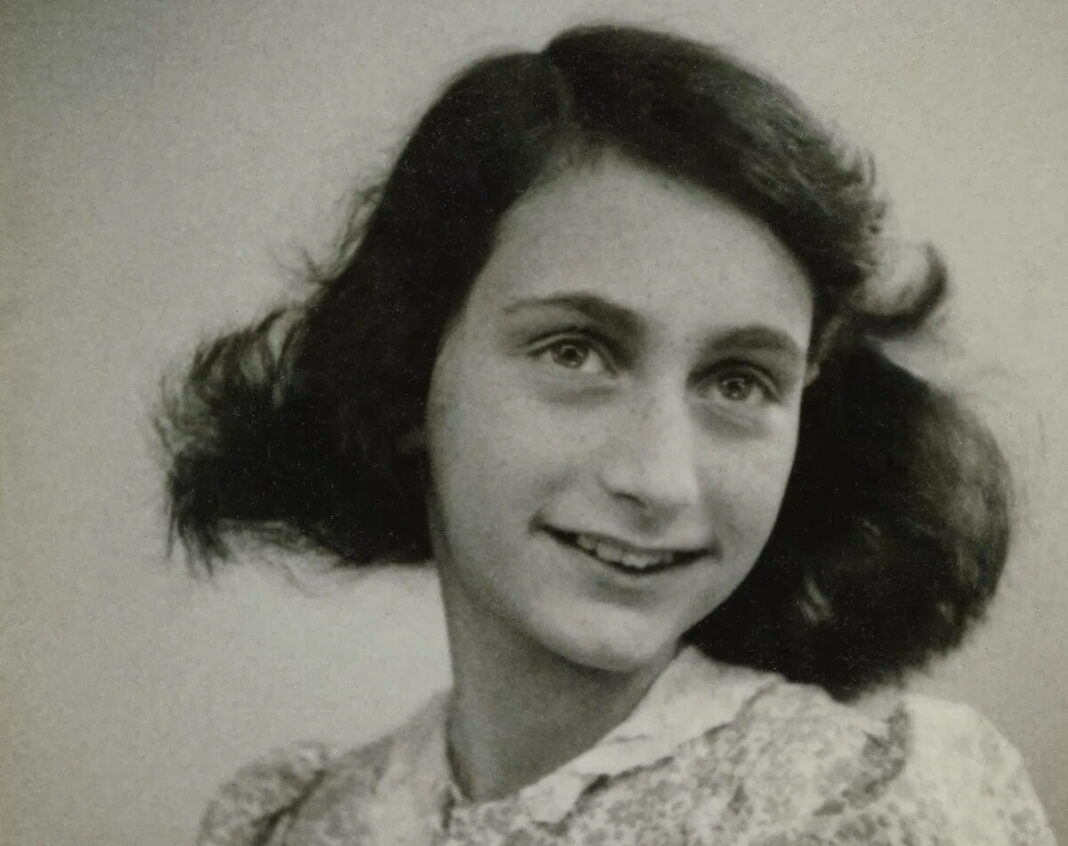Since 2017, a research team has worked on finding the person who has betrayed the Frank family. With 85-87% certainty, a suspect has been confirmed: the notary Arnold van den Bergh.
To protect himself and his family, the Jewish notary Arnold van den Bergh is suspected to have handed over a list of hiding places in Amsterdam to German officials. An anonymous letter, which was issued to Anne Frank’s father Otto shortly after the war, is the centrepiece of the theory.
Crucial evidence: an anonymous letter
On 4 August 1944, the secret annex where Anne Frank, her family had been hiding for two years was unexpectedly discovered by the German Sicherheitspolizei. In 1945, Anne and her sister Margot died in the Bergen-Belsen concentration camp, mere weeks before the British army liberated its prisoners.
Her personal diary, published after the war, moved millions of people around the world. In 2017, retired FBI agent Vince Pankoke decided to revive the case and find the person responsible for the betrayal.
The letter, which was delivered to Otto Frank shortly after the war, gives the crucial hint. It reads: “Your hiding place in Amsterdam is at this moment being revealed to the Jüdische Auswanderung in Amsterdam, Euterpestraat, by A. van den Bergh, currently residing close to the Vondelpark, O. Nassaulaan. The J.A. possesses a whole list of addresses handed over by him.”
The suspect: Arnold van den Bergh
That the notary Arnold van den Bergh betrayed the Frank family (and many others) is not an entirely new insight. When the case was being recovered in the 1960s, Van den Bergh had already been suspected once before.
However, it was concluded that he could not possibly have betrayed the Franks because he had already been sent to a concentration camp in 1943. Only that he hadn’t. The researchers built their theory on three main pillars: knowledge, possibility and motive.
Knowledge
First, could Arnold van den Bergh have known about Frank’s hiding place? The answer is, yes. The notary was a member of the infamous Joodse Raad (Jewish Council). This organisation was founded by German occupiers as an instrument to deliver messages and orders to the Jewish community via Jewish members.
Whilst in the later stages, the Joodse Raad was known to cooperate with the Nazis, the Jewish community still trusted the council in the early stages of the occupation. Letters and secret messages would be entrusted to the Raad to be delivered to members in hiding.
That way, the members, including Arnold van den Bergh, would have access to addresses of hiding places all over Amsterdam. Including Prinsengracht 263, where Anne Frank, her family, the Van Pels family and the family friend Fritz Pfeffer went underground.
Possibility
In 1943, all members of the Joodse Raad were sent to the concentration camp Westerbork. Or so it was thought. Arnold van den Bergh, in fact, had not been amongst them. It appears that the notary had managed to convince German officials that he was actually not Jewish at all. In the meantime, he managed to organise for his two daughters to go underground.
Motive
Despite all efforts, however, Van den Bergh was ordered for deportation in 1944. At this point, the researchers argue, he desperately tried to escape his certain death in a concentration camp.
So, Van den Bergh handed over a list of addresses where Jews went into hiding to demonstrate his willingness to cooperate with the Germans.
New technology makes it possible
After 85 years, this was not an easy undertaking. “This case wasn’t cold, it was frozen,” Pankoke tells the NOS. When the case first got revived in the 1960s, investigative methods like DNA or fingerprint analysis were not yet possible.
As a consequence, the team was left with more indirect evidence ranging from recorded interviews, official police documents, diary entries or war reports. The newest technologies aided in the investigation.
Artificial intelligence was used to compare and connect 66 gigabytes of information about, for instance, similar raidings of hiding places in the neighbourhood of Frank’s secret annex on the Prinsengracht.
In total, thirty different theories of who betrayed the Franks were analysed. “We can say for sure that 27 to 28 of these were unlikely or impossible,” says journalist Pieter van Twisk who helped with the investigation.
Unanswered questions
Some open questions remain. For instance, the anonymous letter stating that Van den Bergh had given a list of addresses to German authorities is only a copy made by Otto Frank himself. Researchers have confirmed that the letter had been written with Frank’s typewriter, but the original stay amiss.
Another question is why Otto Frank had not put the letter forward sooner. This crucial piece of evidence had surfaced during the 1960s, but Frank did not actively try to put the notary forward as a suspect.
It is also still uncertain who has written the letter, and if more than one person has received it. Exactly how Arnold van den Bergh has issued the list to the German authorities is similarly up to speculation.
However, the research team is pretty confident about the results of their investigation. “Because there is no DNA or video evidence available with such old cases, you always have to work with indirect evidence. Yet, our theory has a probability percentage of 85%. We don’t have a smoking gun, but we do have a warm weapon with empty bullets next to it,” says Vincent Panekoke.
What do you think of this incredible revival of the Anne Frank case? Tell us in the comments!
Feature Image: Unknown photographer/Wikimedia Commons/Public Domain




What happened to the Arnold van den Bergh family after 1944? This information impugns their reputation. Did they ultimately end up being murdered in the camps as well? The 2 daughters whom van den Bergh hid as well? This is important to know to complete the story. They could sue for libel if these charges are not true.
I would also like to know.
I wondered the same thing and so I did a genealogy search. The family had three daughters (one set of twins) and they have all died. None of the family died in the camps. Arnold died in 1950 in London. His wife Auguste died in 1968 in Amsterdam. His twin daughters Emma and Esther died in 1999 and 2011 and his daughter Anne Marie died in 1983. It is plausible that Otto Frank found out and did not want to put Arnold’s wife and daughters through the media backlash and the shame he knew they would suffer.
What a tragic finding for the van den Berg family; imagine bearing that cross in future generations. Yet the real tragedy is that he did not have much choice given the brutal Nazi regime and those Dutch citizens that were collaborators. It makes me so sad.
Josephus recorded the history of the destruction of Herodian Temple. And the temple was destroyed on the ninth day of AV (AB same as Abba). And it was the same calendar day some six hundred years before, Babylon destroyed the first Temple of Solomon on the selfsame day, the ninth day of AV.
Jesus died on the cross on the ninth hour that day when His ABBA turned His back on His beloved Son so He became the Lamb of God who takes away the sin of the world. ….that whosoever believe SHALL not perish but have everlasting life. It is NOT the sin of one race or the Romans, but it is my sin and your sin that HE died for. Amen.
Definitely one of the better and more complete articles on the topic, thank you Cara. Certain very important questions I’ve only seen addressed here, such as “Why did Jewish Council know hiding places” and “How did van den Bergh issue the list of hiding places to Germans.” I too would like to know what became of his family.